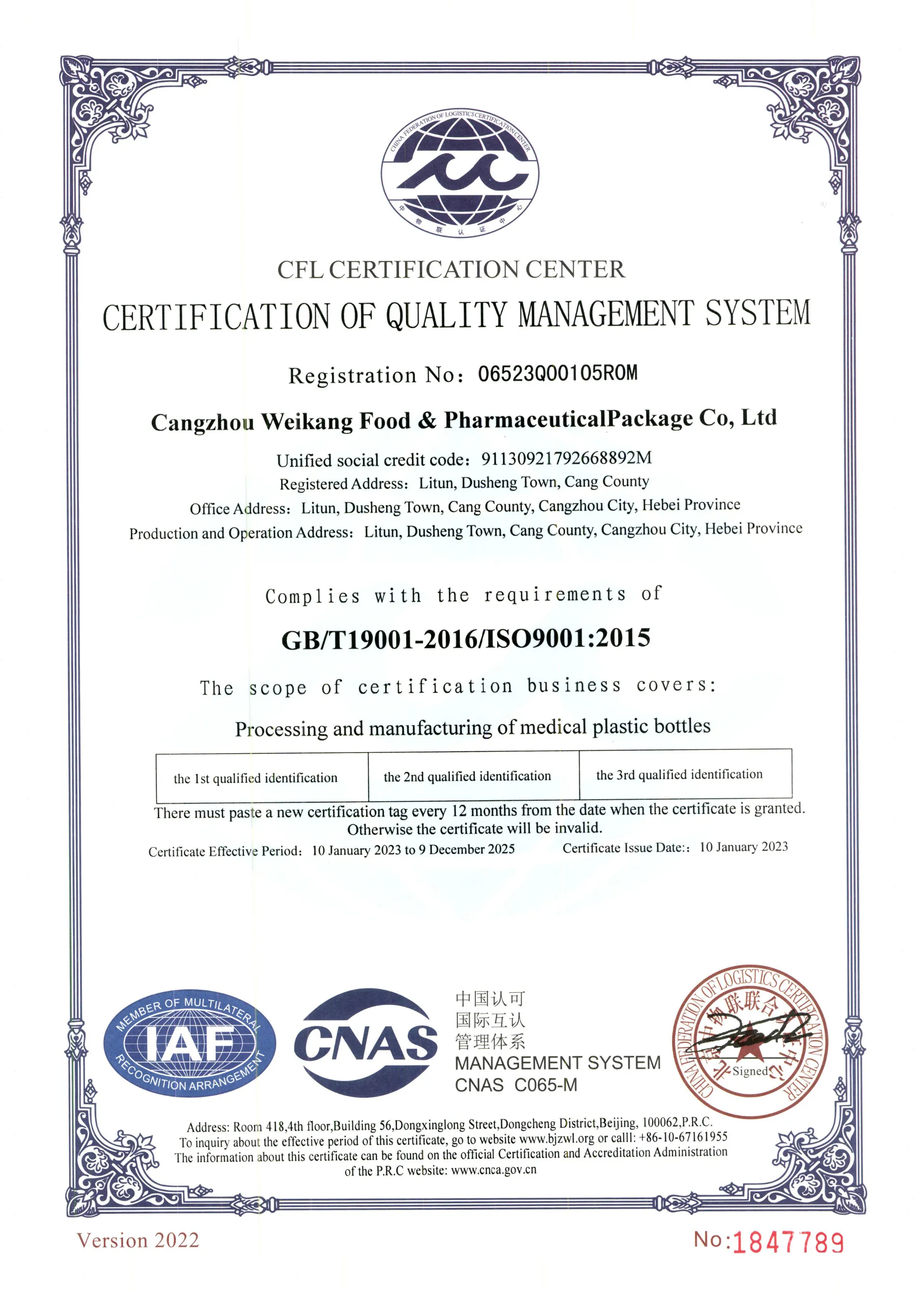Exploring the Design and Functionality of Pharmaceutical Pill Bottles for Improved Medication Management
The Significance of Pharmaceutical Pill Bottles in Modern Medicine
In the dynamic landscape of modern healthcare, pharmaceutical pill bottles play a pivotal role that goes beyond mere containment of medication. These seemingly simple containers encapsulate a broad spectrum of functions—from ensuring the safety and efficacy of drugs to providing critical information to patients. Understanding the importance of pharmaceutical pill bottles can help illustrate their integral role in the medication management process.
1. Safety and Protection
One of the primary purposes of pharmaceutical pill bottles is to keep medications safe from external factors that could compromise their integrity
. Many medications are sensitive to light, moisture, and air, and the design of pill bottles addresses these issues effectively. For example, opaque and airtight containers serve to shield medications from these environmental factors, thereby extending their shelf life and ensuring they remain effective throughout their intended use period.Additionally, child-resistant closures are a crucial feature of pill bottles, especially for medications that may pose a risk to young children. These safety features help prevent accidental ingestion, which can lead to serious health risks or even fatalities. Thus, pharmaceutical manufacturers are required to adhere to strict regulations that govern the design and functionality of pill bottles, keeping safety as a top priority.
2. Information Dissemination
Pharmaceutical pill bottles are also essential for providing vital information to patients. Each bottle is typically labeled with crucial details, including the name of the medication, dosage instructions, expiration date, and potential side effects. This information empowers patients to take their medications correctly, thereby maximizing therapeutic outcomes.
Furthermore, the use of barcodes and QR codes on pill bottles has revolutionized the way patients and healthcare providers interact with medication. Scanning these codes can reveal additional information, such as patient-specific instructions, potential drug interactions, and refill options. This technological integration enhances the overall medication management process, contributing to better patient adherence and safety.
pharmaceutical pill bottles

3. Branding and Identification
The pharmaceutical industry is highly competitive, and branding plays a substantial role in product differentiation. Custom-designed pill bottles offer pharmaceutical companies a platform to establish their brand identity. Distinctive colors, logos, and labeling designs help pharmacists and patients quickly identify medications, reducing the risk of errors—a factor that is critical in a field where mistakes can have serious consequences.
Moreover, clear and consistent branding on pill bottles can foster trust among patients. Familiarity with a brand can influence patient choices and encourage adherence to prescribed therapies. Thus, the visual appeal of pill bottles is not merely aesthetic; it also serves significant practical and marketing purposes.
4. Environmental Considerations
As society becomes more environmentally conscious, the pharmaceutical industry is gradually responding to the call for sustainable practices, including the materials used in pill bottles. Many manufacturers are exploring biodegradable and recyclable options to minimize environmental impact. Transitioning to environmentally friendly materials can lead to a reduction in waste and promote a greener approach to healthcare.
Conclusion
In conclusion, while pharmaceutical pill bottles may seem like simple containers for medication, they embody a complex interplay of safety, information, branding, and environmental responsibility. As the healthcare landscape evolves, the role of pill bottles will likely continue to expand, integrating advanced technologies and sustainable practices that enhance patient care. Understanding the significance of these containers is essential not only for healthcare professionals but also for patients who rely on them for their daily health and well-being. The next time you reach for a pill bottle, consider the thought and innovation that has gone into its design—the unsung hero of the medication journey.
-
Aesthetic Makeup Spray Bottles | Fine Mist Empty RefillableNewsAug.19,2025
-
White Plastic Veterinary Vaccine Vials | Lab Liquid BottlesNewsAug.18,2025
-
Plastic Medicine Liquid Bottle: Secure Flip Top Drug VialsNewsAug.17,2025
-
Durable 250ml Blue Plastic Vaccine Vial for Lab & Vet UseNewsAug.16,2025
-
Sterile Virus Sample Tubes: Secure & Reliable Specimen CollectionNewsAug.15,2025
-
White 250ml Plastic Vaccine Vial for Lab & Vet MedicineNewsAug.14,2025
























